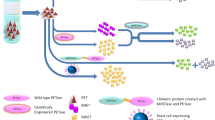N
-heteroaromatic compounds are utilized by micro-organisms as a source of carbon (and nitrogen) and energy. The aerobic bacterial degradation of these growth substrates frequently involves several hydroxylation steps and subsequent dioxygenolytic cleavage of (di)hydroxy-substituted heteroaromatic intermediates to aliphatic metabolites which finally are channeled into central metabolic pathways. As a rule, the initial bacterial hydroxylation of a N-heteroaromatic compound is catalyzed by a molybdenum hydroxylase, which uses a water molecule as source of the incorporated oxygen. The enzyme's redox-active centers – the active site molybdenum ion coordinated to a distinct pyranopterin cofactor, two different [2Fe2S] centers, and in most cases, flavin adenine dinucleotide – transfer electrons from the N-heterocyclic substrate to an electron acceptor, which for many molybdenum hydroxylases is still unknown. Ring-opening 2,4-dioxygenases involved in the bacterial degradation of quinaldine and 1H-4-oxoquinoline catalyze the cleavage of two carbon-carbon bonds with concomitant formation of carbon monoxide. Since they contain neither a metal center nor an organic cofactor, and since they do not show any sequence similarity to known oxygenases, these unique dioxygenases form a separate enzyme family. Quite surprisingly, however, they appear to be structurally and mechanistically related to enzymes of the α/β hydrolase fold superfamily. Microbial enzymes are a great resource for biotechnological applications. Microbial strains or their enzymes may be used for degradative (bioremediation) or synthetic (biotransformation) purposes. Modern bioremediation or biotransformation strategies may even involve microbial catalysts or strains designed by protein engineering or pathway engineering. Prerequisite for developing such modern tools of biotechnology is a comprehensive understanding of microbial metabolic pathways, of the structure and function of enzymes, and of the molecular mechanisms of biocatalysis.
Similar content being viewed by others
Author information
Authors and Affiliations
Rights and permissions
About this article
Cite this article
Fetzner, S. Enzymes Involved in the Aerobic Bacterial Degradation of N-Heteroaromatic Compounds: Molybdenum Hydroxylases and Ring-Opening 2,4-Dioxygenases. Naturwissenschaften 87, 59–69 (2000). https://doi.org/10.1007/s001140050011
Issue Date:
DOI: https://doi.org/10.1007/s001140050011




